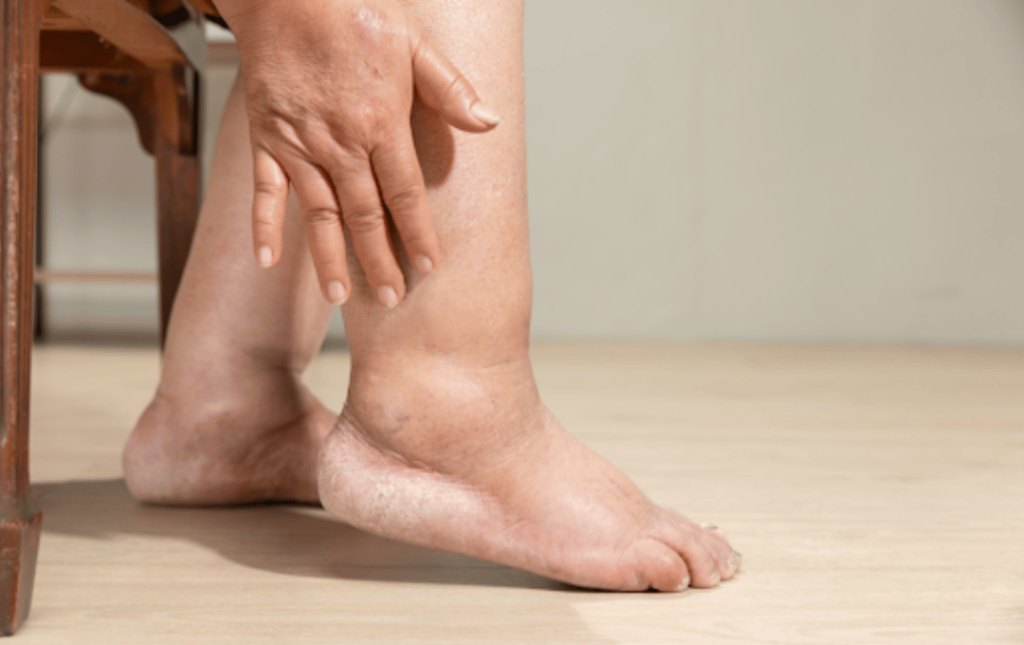Millions of people suffer from peripheral artery disease (PAD) without realizing the severe health risks. PAD occurs when plaque buildup in the arteries causes decreased blood flow to the lower extremities, leading to reduced circulation that can cause pain, discomfort, and difficulty in daily activities. Some individuals may be asymptomatic until they have a heart attack or stroke.
When left untreated, PAD can result in serious, sometimes irreversible complications that impact overall health and quality of life. According to the American Heart Association, people with PAD have a higher risk of coronary artery disease, heart attack, and stroke.
If you have PAD or are worried you may be at risk, schedule a consultation with a vascular specialist. USA Vascular Centers has a team of experienced doctors who can diagnose PAD and create personalized treatment plans to help prevent complications of untreated PAD.
CALL & SCHEDULE AN APPOINTMENT
Consequences of Untreated PAD
Untreated peripheral artery disease (PAD) can lead to serious health complications and severe pain or discomfort. Even if your current symptoms are manageable and aren’t impacting your day-to-day, you’re putting yourself at an increased risk of:
- Chronic Pain and Reduced Mobility: Individuals with severe PAD symptoms struggle with walking, climbing stairs, and exercising. You may also notice leg, calf, and hip pain is worsening with time.
- Non-Healing Wounds and Ulcers: When blood flow is restricted, it is harder for key nutrients to reach the lower extremities, leading to non-healing or slow-healing wounds.
- Critical Limb Ischemia (CLI): Untreated peripheral artery disease can also lead to critical limb ischemia (CLI). CLI signifies that blood flow to the foot or leg is completely blocked.
- Risk of Amputation: PAD is a common cause of limb loss overall, with the rate of dysvascular amputation being nearly 8 times greater than the rate of trauma-related amputations, the second leading cause of limb loss.
- Increased Risk of Heart Attack and Stroke: Artery blockages can restrict blood flow, increasing your risk of heart attack and stroke.
- Lead to Gangrene: Gangrene occurs when blood flow is restricted to the lower extremities, causing tissue death and infections.
While some people with PAD develop noticeable symptoms early on, others may not experience symptoms until the disease has advanced. Early detection and treatment can improve quality of life, preserve independence and mobility, and reduce risks of serious complications. If you’re over 50 or have PAD risk factors, schedule a screening with a vascular specialist today.
Why Early Detection is Key for Untreated PAD
The sooner PAD is diagnosed, the more treatment options are available. Ignoring PAD symptoms can increase your risk of severe complications, including heart attack, stroke, and critical limb ischemia (CLI). Advanced PAD cases may require surgical interventions with longer recovery times.
Doctors at USA Vascular Centers can diagnose PAD by conducting an ankle-brachial index (ABI) test or an angiogram. Treatment for PAD can be a relatively quick and smooth process, and it can be life-changing for patients with PAD.
Non-Surgical Peripheral Artery Disease Treatment Options
USA Vascular Centers specialize in minimally invasive PAD treatments. If you are diagnosed with PAD, our expert vascular doctors may recommend one of the following non-surgical treatments:
- Angioplasty: A balloon is placed inside the artery to compress the plaque against the artery wall.
- Stent Placement: After an angioplasty, a stent is put inside the artery to keep it propped open.
- Atherectomy: A small blade or laser is used to physically remove the accumulated plaque from the artery to improve circulation.
By undergoing a minimally invasive procedure for PAD, patients can benefit from a shorter recovery time and improved blood flow to the legs. Additionally, taking medications as prescribed and implementing lifestyle modifications can greatly reduce your risks of dangerous complications associated with untreated PAD.To get started on your journey to better vascular health, visit a vascular specialist for your initial consultation.
Start Your Journey with USA Vascular Centers
At USA Vascular Centers, we strive to make your treatment a smooth experience. All of our locations are accredited by the Accreditation Association of Ambulatory Health Care (AAAHC), which means that our doctors constantly meet and exceed the highest standards of patient care.
Schedule a consultation at a vascular treatment center near you or call us at 888.773.2193 today.
FREQUENTLY ASKED QUESTIONS
How quickly does PAD progress?
The rate of progression will vary depending on the patient and the location of the blockage. PAD may progress quicker if the patient has multiple risk factors. Underlying health conditions such as diabetes may also contribute to PAD progression.
Can untreated PAD be fatal?
Untreated peripheral artery disease can lead to serious cardiovascular conditions such as heart attack or stroke.
What is the end stage of peripheral artery disease?
Advanced stages of PAD are called acute limb ischemia. This stage of PAD may require serious medical attention and can lead to amputation.
Can PAD symptoms be managed without treatment?
Certain medications and lifestyle modifications can lessen the severity of symptoms but are not the solution. Treatment in combination with medications and lifestyle modifications can help manage symptoms and prevent complications.



